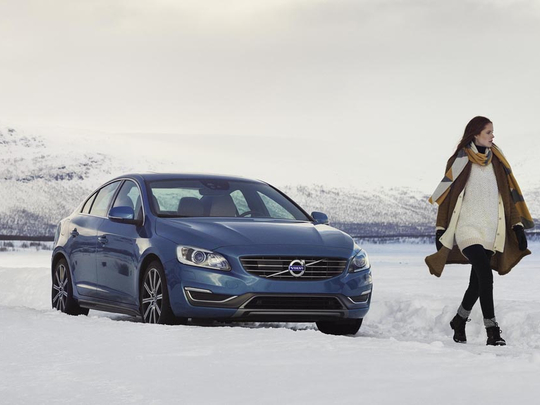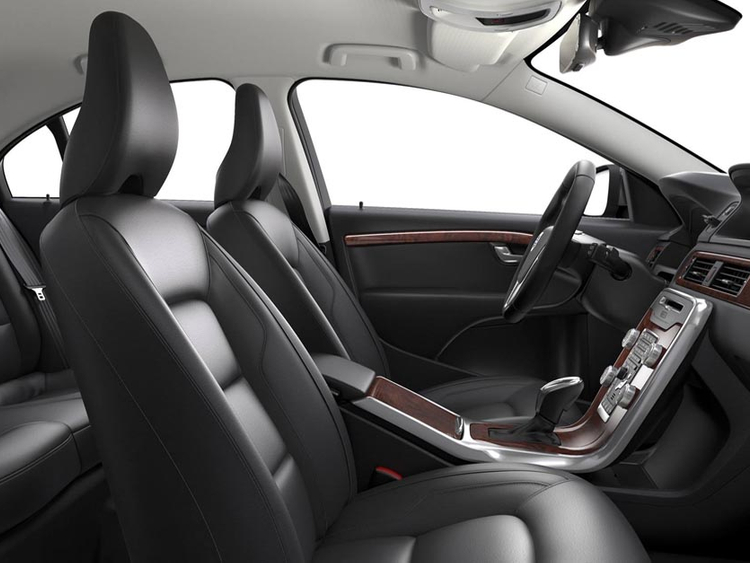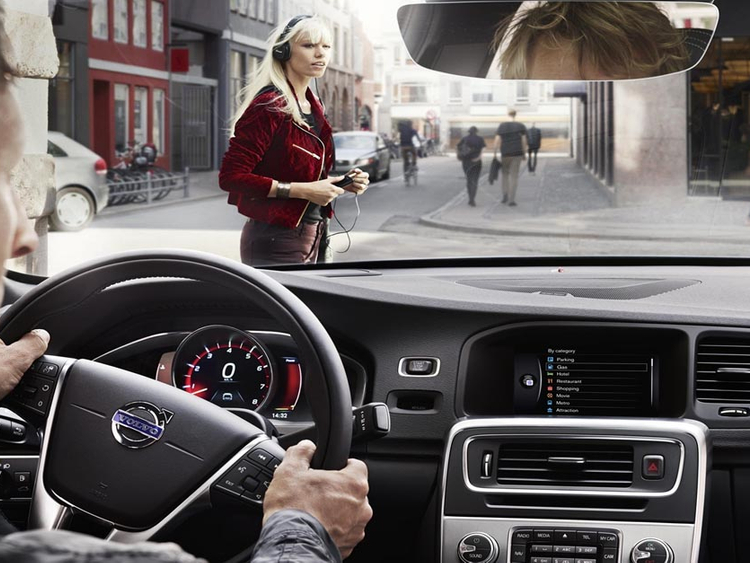
There is new thinking in the global automobile industry: More cylinders don’t equal more power. Less weight equals better fuel efficiency without compromising safety. Artificial intelligence enhances driving safety. Smartphones are as important to the automobile as are tires and engines.
That thinking is evident in the 2015.5 Volvo S60 T6 Drive-E sedan - that’s right, Volvo is already half a year into one of its newest models. The “E,” in this case, refers to “efficiency.”
It is an almost perfect front-wheel-drive midsize entry-level luxury sedan. The caveat is price. The car in question starts at $39,250. Equipped with driver-assistance and technology packages, it can run well north of $40,000. The saving grace is that the price might well be worth it, certainly more so than some of its less-equipped, equally priced German rivals.
The Swedish-spawned S60 T6 Drive-E, fully equipped, is a technological work of genius. That is not hyperbole. Consider its 2-liter in-line four-cylinder gasoline engine. It is supercharged and turbocharged, force-fed air using two technologies, boosting horsepower and torque while also improving fuel economy.
Translation: The four-cylinder engine in the S60 T6 Drive-E delivers a maximum 302 horsepower and 295 pound-feet of torque and does both smoothly, effortlessly and consistently when needed. It moves the car from 0 to 60 mph in 5.6 seconds. And it does all that at a quite respectable 24 miles per gallon in the city and 35 mpg on the highway.
It also is one of the cleanest four-cylinder engines available, producing 30 percent fewer harmful tailpipe emissions than many of its rivals. Premium gasoline is recommended for best performance. But I operated my sample quite well, easily and problem-free, on less-expensive 89-octane fuel.
I was impressed. Welcome to the Age of the Intelligent Automobile.
The S60 T6 Drive-E, equipped with driver-assistance and technology packages, is as much of a comfort, in terms of peace of mind, as it is a joy to drive. Its electronic blind-side and cross-traffic warning systems keep you aware of errant (or simply rude) motorists encroaching on your turf. Those technologies also prevent driving errors on your part. My favorite part of the driver-assistance package is the pedestrian-bicyclist warning system, especially useful in cities such as Washington and New York where too many of them occupy the road with a dangerous sense of self-entitlement.
The S60 T6 Drive-E literally protects you from that wayward traffic, intervening with automatic braking, at car speeds of 20 mph or less, when an unwary pedestrian or cyclist strays into your driving lane.
I like this stuff. It makes perfect sense in today’s world of distracted driving, walking and cycling. An early version of that pedestrian-protection technology, tested on a S60 sedan two years ago, saved me and an elderly gentleman leaving the Virginia Hospital Center a lot of grief.
I was in the car leaving one of the hospital’s parking structures. The gentleman exited an adjoining doctor’s office apparently lost in thought about whatever he was told in his medical visit. He began walking one way and then, suddenly, changed direction and walked directly in front of the S60. The car automatically braked. The gentleman continued his meandering journey unaware that both of our lives had just escaped a major complication, largely thanks to Volvo.
This is smart stuff, and I am happy to see Volvo continuing to move in this direction. What is more, “smart,” in this case, does not mean boring. The S60 T6 Drive-E is a tightly hewn sedan. It goes where you point it when you point it - unless a pedestrian or bicyclist is getting in the way. The rear-cross-traffic and side-traffic alert systems work perfectly.
My dream: I hope Volvo can, somehow, find a way to knock $10,000 off the sticker price of the S60 T6 Drive-E. But that might be wishing for too much. Frankly, what is offered in the 2015.5 S60 T6 Drive-E could very well be worth the cost. How do you measure the benefit of a ruinous accident that didn’t happen?













